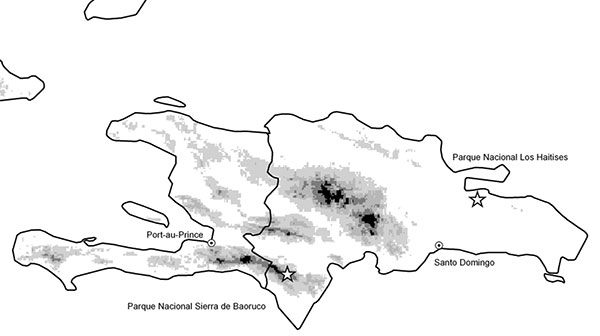Volume 9, Number 10—October 2003
Dispatch
West Nile Virus Transmission in Resident Birds, Dominican Republic
Figure

Figure. Hispaniola in the West Indies, on which are located Haiti (western third of the island) and the Dominican Republic. West Nile virus transmission occurred at Parque Nacional Los Haitises before November 2002. Shades of gray are 500-m intervals (e.g., 0–500, 500–1000).
Page created: January 10, 2011
Page updated: January 10, 2011
Page reviewed: January 10, 2011
The conclusions, findings, and opinions expressed by authors contributing to this journal do not necessarily reflect the official position of the U.S. Department of Health and Human Services, the Public Health Service, the Centers for Disease Control and Prevention, or the authors' affiliated institutions. Use of trade names is for identification only and does not imply endorsement by any of the groups named above.